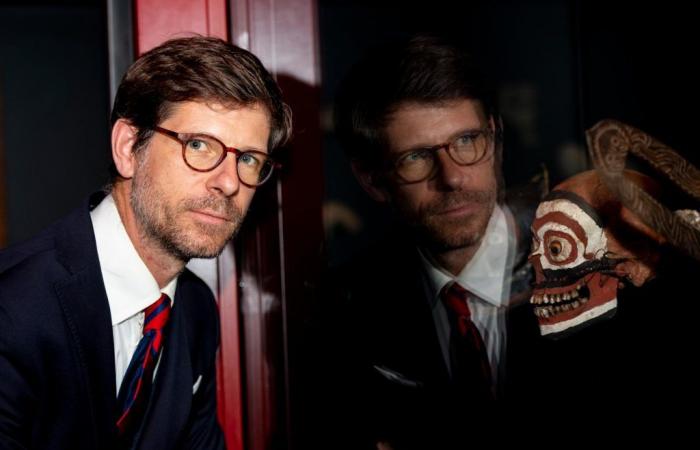Philippe Charlier, 47, directs the Anthropology, Archeology, Biology (LAAB) laboratory, specializing in the fields of forensic anthropology, at the University of Versailles-Saint-Quentin-en-Yvelines/Paris-Saclay. He is the main curator of the exhibition “Zombis. Death is not an end? », at the Musée du quai Branly-Jacques-Chirac, which offers the triple perspective of medicine, archeology and field anthropology on the history and practice of zombification in Haiti.
Read also | Article reserved for our subscribers With the exhibition “Zombis. Death is not an end? » at the Musée du quai Branly, the epic tale of the Haitian living dead
Add to your selections
This exhibition shows that zombies, which have inspired so many films and books, really exist. When did this phenomenon go back to?
The very first occurrence of the word zombi dates from 1687, in the French book The Zombie of Greater Perubut the person who is described as such in this book is actually just a wizard. It is an occurrence which is semantic, but not a real anthropological occurrence of the figure of the zombie as we talk about it in this exhibition. Everything leads us to think that, from the 19th century, that is to say at the time of the era of the emancipation of the first slaves, those we call maroon slaves, there were already zombies, but We are cautious, because we do not have written testimonies. The oldest cases for which we have testimonies are the years 1920-1930. The American novelist and anthropologist Zora Neale Hurston, like the writer and explorer William Seabrook, saw them in Haiti, and described and analyzed them.
This phenomenon is specific to Haiti, which found itself at the crossroads of several influences…
Yes, the zombie appears at the convergence of three things: the religions of sub-Saharan Africa, transatlantic slavery and local traditions and knowledge that the Tainos, the Arawaks and the Caribs, who were there before the arrival of Europeans, would have transmitted to Maroon slaves, therefore escaped from the influence of Westerners, in particular the secrets of poisons and plants.
What exactly is zombification?
In the strict sense of the anthropological term, it is the act of judging an individual because he does evil within Haitian society. The main cause of zombification is selling land that does not belong to us. Faced with a theft, we can either summon an individual before a traditional court, which will take a long time, with no guarantee of success, or turn to parallel justice, by calling on a secret society specializing in justice, the bizangos. Seven times in a row, the person will be dragged at night into the open countryside, into the forest or into a temple, and they will be asked to explain themselves, surrounded by fetishes. And if, seven times in a row, she cannot prove her innocence, she will be sentenced to “a punishment worse than death”.
You have 60.51% of this article left to read. The rest is reserved for subscribers.







